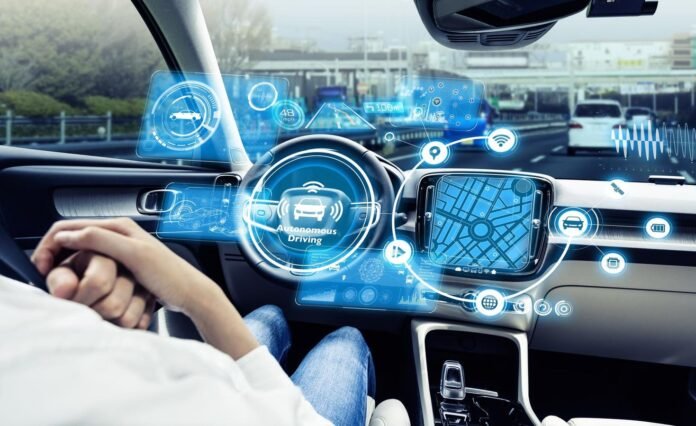Can we trust AI driving?
Our technological threshold is often too far ahead of our social threshold. That’s when AI proponents need to take a step back and consider the human impact of their work.
That’s what’s happening with artificial intelligence today, according to Zack Kass, AI futurist and former head of go-to-market at OpenAI. Ultimately, AI running in the background will allow us to communicate with machines and applications as easily as we communicate with each other, he said at the recent Precisely conference in Philadelphia.
“My prediction is that it’s going to be weird before it gets great,” Kass said. ‘And we will have to accept that. All progress comes at a cost. But one of the most interesting things we need to prepare for in this transition is understanding the idea of technological barriers and societal barriers.”
A technological threshold “is simply asking the question, ‘what can a machine do?’” he explained. “The social threshold asks the questions: ‘What do we want a machine to do? Or are we willing to let it happen?’”
In the meantime, there are three obstacles that could slow or hinder progress, he warns: people’s fear of loss of control; disproportionate views on the risks of AI; and low tolerance for machine failures.
These challenges relate to the rise of autonomous vehicles, which Kass identified as the “benchmark” for AI adoption. Just as Otis Elevators struggled to assuage people’s fear of elevators in the late 1800s and early 1900s, there is a similar fear and loathing for autonomous vehicles.
“I think with the autonomous vehicle we are on the cusp of an incredible insight into how we view technology specifically related to AI,” he said. He points out the three challenges that autonomous vehicles – and by extension AI – face.
- Loss of control. “People like control,” he explained. “We love getting into the car, putting our foot on the pedal, turning the steering wheel and driving this huge machine.”
- Disproportionate fears. “Fifteen times more people in the United States are afraid of flying than of driving,” Kass said. “One is empirically safe and the other is empirically dangerous. Furthermore, people don’t realize how good autonomous vehicles are. Most people don’t know that today, 50,000 people will drive autonomous vehicles in Arizona without any accidents. 10,000 in the Bay Area.”
- Low tolerance for machine failures. “Humans have an exceptional tolerance for human failure, and we have no tolerance for mechanical failure,” he noted. “This is why 20,000 people can die every year from drunk drivers, and we are very willing to say that this is simply the cost of doing business. But if a Tesla swerves into the wrong lane on autopilot, everyone calls for the program to be stopped.” Holding machines or AI to a higher standard isn’t necessarily a bad thing, he added. “That’s why the building I’m in will never fall over, and that’s why the planes we fly don’t fall out of the sky. And it has never been safer to fly than it is now. We build so much robustness into our mechanical systems. Our expectations for the delivery of these technologies are very high.”
What’s happening, Kass said, is that technology has gotten ahead of humans’ ability to deal with it. Looking at the Otis Elevator analogy, people were afraid to ride elevators, but the company responded with human touches: music, mirrors and human elevator operators. “It worked. People started using elevators. Once the technological threshold was reached, it was updated by truly analogous adjustments in the social threshold.”
Likewise, fears or confusion about AI will diminish as we see more human influences added to solutions. For example, there is agent AI. or autonomous agents. “We will assign tasks or goals to AI and let those systems perform the tasks and goals across all apps and browsers. Imagine a world where we break away from the 100 or 150 apps on our phones.”
This is made possible by natural language operating systems, where “we’re actually moving to a world where we interact with machines the way we interact with each other,” Kass explains. “The reason is the digital divide we live in today. The systems we design, such as the personal computer, are not actually second nature. You have to spend a lot of time getting to know the machine to use its full potential.”
Even searching for keywords via Google “is not very clear for some people,” says Kass. “ChatGPT gives us a first look at what the world will look like in the future, where you can communicate with a machine the way you can communicate with each other. And the natural language operating system, which we think may emerge within the next ten years, or certainly the next fifteen, will shift from this burdensome communication with machines to a much more natural communication system.”





